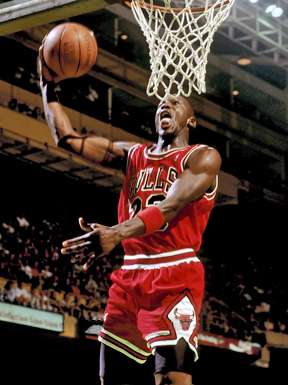August 5, 2011 report
Basketball shot selection analyzed mathematically

In the sport of basketball players are constantly faced with the choice of whether to shoot for the hoop when a shot opportunity arises or to hold on to the ball and hope a better opportunity will arise. Now a theoretical physicist from the University of Minnesota in the US has analyzed the problem mathematically and determined the best strategy.
Graduate student Brian Skinner decided to analyze basketball shot selection after hearing about traffic flow research that reached the unexpected conclusion that average commuting time could be reduced by road closures that force drivers to travel by routes they would otherwise avoid in order to try to minimize their own commuting time. The traffic flow diagrams reminded Skinner, an enthusiastic fan of basketball, of diagrams of the flow of basketball players in a game. The surprising conclusion also reminded him of a basketball theory named after Patrick Ewing, a high-scoring basketball player. When the games of Ewing’s team were analyzed it was discovered that the team won more games if the big-scoring Ewing was absent.
Skinner realized that most of the mathematical equations and variables used in analyzing traffic flow could also be applicable to basketball and the movement of the ball in the game. His analysis, published at arXiv.org, concentrated on the movement of the ball as it approached the hoop.
Skinner’s model aimed to find out how likely the shot is to go in before the player should make the shot. Shots more likely to go in were classed as higher quality shots, and the model assumed that the quality of shot opportunities falls randomly.
The mathematical model demonstrated the optimal strategy for scoring the maximum points is for the team to take their time and concentrate on making high quality shots as long as there is sufficient time remaining for the shot. The model also concluded that a team playing a faster game and having twice the shot opportunities of its rival should not have double the shooting rate, but taking more time and being more selective about which shots to take would give them the biggest advantage. So, for example, if the slower team shoots at an average rate of 20 seconds, the team playing twice as fast should not shoot every 10 seconds but should take an extra three seconds on average, giving a shooting rate of 13 seconds.
More information: arxiv.org/abs/1107.5793
© 2010 PhysOrg.com




















